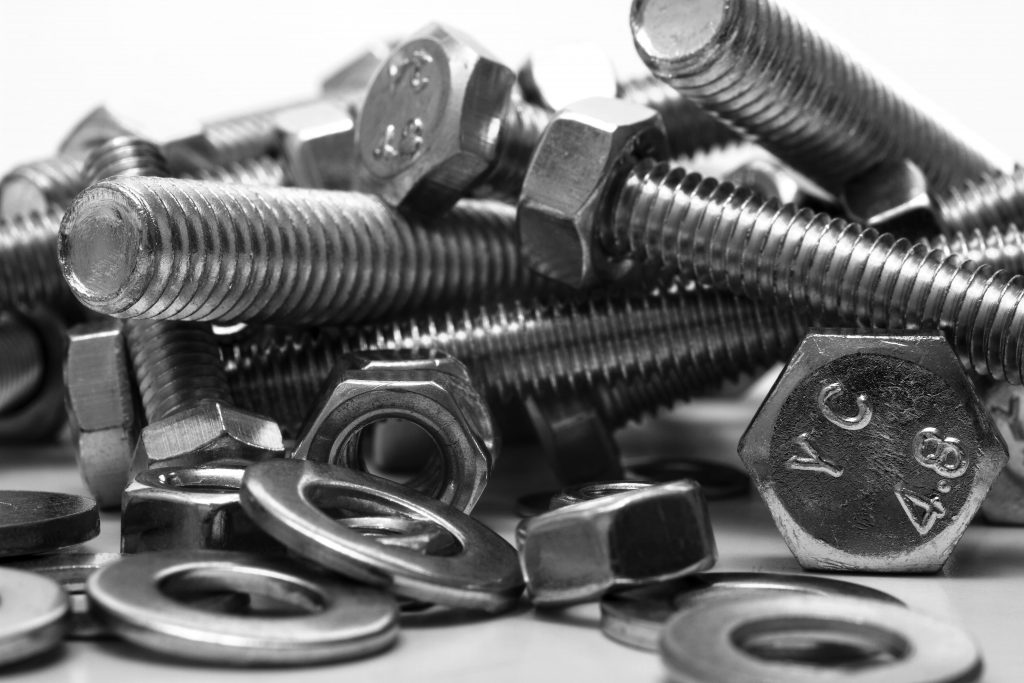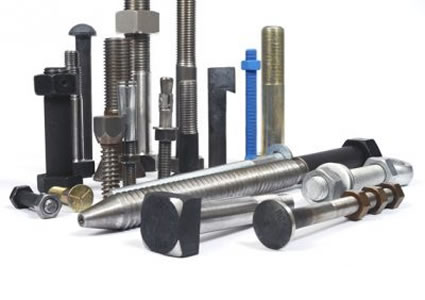Encountering a rounded or damaged bolt can be a significant inconvenience, whether you’re working on a construction project, performing automotive repairs, or dealing with machinery maintenance. Such issues are not only frustrating but can also halt progress, leading to delays and potentially higher costs. However, with the right approach and tools, these challenges can be managed effectively. This comprehensive guide aims to provide you with the knowledge and techniques required to remove rounded or damaged bolts efficiently, ensuring that your projects proceed smoothly.
Understanding the Challenge of Rounded Bolts
Rounded bolts are a common issue in various fields, typically resulting from corrosion, over-tightening, or the use of incorrect tools. These factors can lead to the head of the bolt losing its defined edges, making standard tools like wrenches and sockets less effective. Recognising the signs of a bolt that is at risk of rounding off is crucial. Preventative measures, such as using the correct sized tools and avoiding excessive force, can save significant time and effort. However, once a bolt has become rounded, different strategies are required.
Initial Approaches to Bolt Removal
When faced with a rounded or damaged bolt, the initial approach should be cautious and methodical. Attempting to force the bolt out with excessive strength is likely to exacerbate the issue, potentially leading to further damage. Instead, start by applying a penetrating oil to the bolt. This substance can seep into the threads, helping to loosen the grip by breaking down rust and corrosion. Allow the oil to sit for a period, which can range from a few hours to overnight, depending on the severity of the situation.
Following the application of penetrating oil, attempt to remove the bolt using a tool that provides a better grip than standard wrenches or sockets. Options include using a vice grip or a specially designed bolt extractor socket. These tools can often provide the additional grip necessary to turn the bolt, especially after the lubrication has had time to penetrate.

Advanced Techniques for Stubborn Bolts
If the initial attempts are unsuccessful, more advanced techniques may be required. One such method involves applying heat directly to the bolt. This can be done using a propane torch, being cautious to avoid overheating surrounding materials, especially in sensitive areas like automotive engines or electrical equipment. The expansion and contraction of the bolt due to heat can break the corrosion bond between the bolt and its housing, making it easier to remove.
Another advanced technique involves the use of left-hand drill bits and extractors. This method requires drilling directly into the centre of the bolt with a left-hand drill bit, which can sometimes catch and unscrew the bolt during the drilling process. If this does not remove the bolt, it creates an ideal setting for using a screw extractor, which can be inserted into the drilled hole and used to turn the bolt counterclockwise.
Drilling and Tapping for Complete Removal
In cases where the bolt remains immovable, drilling out the bolt may be the only solution. This involves using a drill bit that is slightly smaller than the bolt’s shaft and carefully drilling through the centre of the bolt. This process requires patience and precision to avoid damaging the threads of the hole in which the bolt sits. Once the bulk of the bolt has been removed through drilling, the remaining material can often be picked out from the threads, clearing the way for a replacement bolt.
Should the threads become damaged during this process, it may be necessary to re-tap the hole. Tapping involves using a tap tool to cut new threads into the hole, ensuring that a new bolt can be inserted securely. This process can restore the functionality of the connection point, allowing for the continued use of the equipment or structure.
Preventative Measures and Best Practices
While the focus of this guide is on removing rounded or damaged bolts, it is equally important to address preventative measures. Proper maintenance, including regular cleaning and lubrication of bolts, can significantly reduce the risk of them becoming damaged or rounded in the first place. Additionally, always using the correct tools and techniques when installing and removing bolts can prevent many issues from arising.
Techniques for Preventing Further Damage
When faced with the stubborn resistance of a rounded or damaged bolt, it is crucial to approach the situation with a mindset geared towards prevention of further damage. Rushed decisions or improper use of tools can transform a manageable situation into a significantly worse one. It is advisable to work slowly and thoughtfully, assessing each step’s impact on the bolt and surrounding material. If initial efforts do not yield success, it might be time to step back and reevaluate rather than pushing forward with excessive force or speed.
In situations where the bolt is not only rounded but also seized due to corrosion, careful application of chemical penetrants can make a substantial difference. These products are designed to seep into the tiniest cracks and crevices, breaking down the rust that locks the bolt in place. It’s a testament to the adage that sometimes, more time and less force is the solution to overcoming resistance.
The Role of Professional Help
There are instances when, despite your best efforts, a rounded or damaged bolt refuses to budge. This is where professional help comes into play. Seeking assistance from a professional can prevent causing irreparable damage to the material or the equipment. Professionals come equipped with specialised tools and techniques, as well as the experience to know which approach is most likely to succeed based on the specific circumstances.
Moreover, professional intervention can also provide learning opportunities. Observing how a seasoned technician approaches a problematic bolt can offer valuable insights and techniques that can be applied in future scenarios. This transfer of knowledge is an often overlooked benefit of calling in experts.

Post-Removal Processes and Reassembly
Once the problematic bolt has been successfully removed, the job is not yet complete. It’s essential to prepare the area for the installation of a new bolt. This preparation involves cleaning out the bolt hole, removing any debris or remnants of the old bolt, and inspecting for any damage that might have occurred during the removal process. If the threads inside the hole have been damaged, they may need to be repaired or re-tapped before a new bolt can be installed.
Choosing the correct replacement bolt is another critical step. It should match the specifications of the original bolt, not just in size but in material and strength grade. This ensures that the new bolt can handle the stresses and strains required of it, preventing future failures.
Long-Term Maintenance and Care
Maintaining the integrity of bolts and the items they secure is an ongoing process. After addressing a rounded or damaged bolt, implementing a routine maintenance schedule can prevent similar issues from arising in the future. Regular inspections can identify potential problems before they escalate, and applying anti-seize compounds can prevent bolts from seizing and becoming rounded.
Understanding the conditions that led to the bolt’s damage is crucial. If the bolt was over-tightened, it might be beneficial to use a torque wrench in the future to ensure bolts are tightened to the appropriate specifications. If corrosion was the issue, examining the environment for factors that contribute to rust and taking preventative measures can extend the life of bolts and the equipment they hold together.
Innovative Solutions and Future Directions in Bolt Management
As we navigate the complexities of maintaining and managing mechanical assemblies, the continuous evolution of tools and methodologies brings new solutions to age-old problems like rounded or damaged bolts. The fastening industry is not static; it constantly evolves, incorporating technological advancements and feedback from the field to develop better, more efficient ways of handling fastening issues.
Innovations in material science have led to the creation of bolts that are more resistant to wear, corrosion, and rounding. Alloys with higher tensile strengths and coatings designed to reduce friction and prevent corrosion can significantly extend the life of these fasteners. These advancements mean that the bolts of tomorrow will not only be stronger but also more resilient to the conditions that contribute to damage and wear.
Technological advancements are also revolutionising the tools used to install, tighten, and remove bolts. Torque wrenches with digital readouts, for example, offer unprecedented precision, ensuring that bolts are neither under- nor over-tightened. Meanwhile, ultrasonic bolt tension metres provide real-time feedback on the load applied to a fastener, helping to prevent damage before it occurs.
Contact GSS Fasteners
The challenge of dealing with rounded or damaged bolts is an opportunity for learning and growth. By leveraging new materials, tools, and technologies, and by committing to ongoing education, we can improve the reliability and longevity of mechanical assemblies. The future of bolt management is bright, with innovations that promise not only to solve current problems but also to redefine what is possible in the maintenance and repair of mechanical systems. As we move forward, we at GSS Fasteners remain committed to providing our clients with cutting-edge solutions, backed by expert knowledge and unparalleled customer service. Get in touch with the experienced team at GSS Fasteners today to find out more.
The range of imperial bolts we have at GSS Fasteners is unmatched so contact us today.
